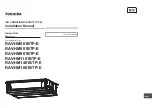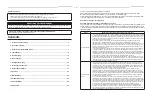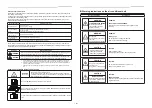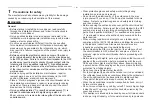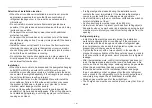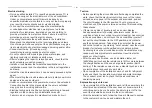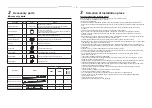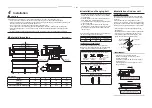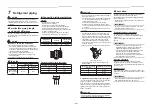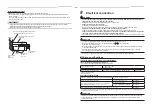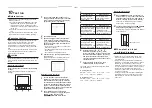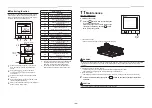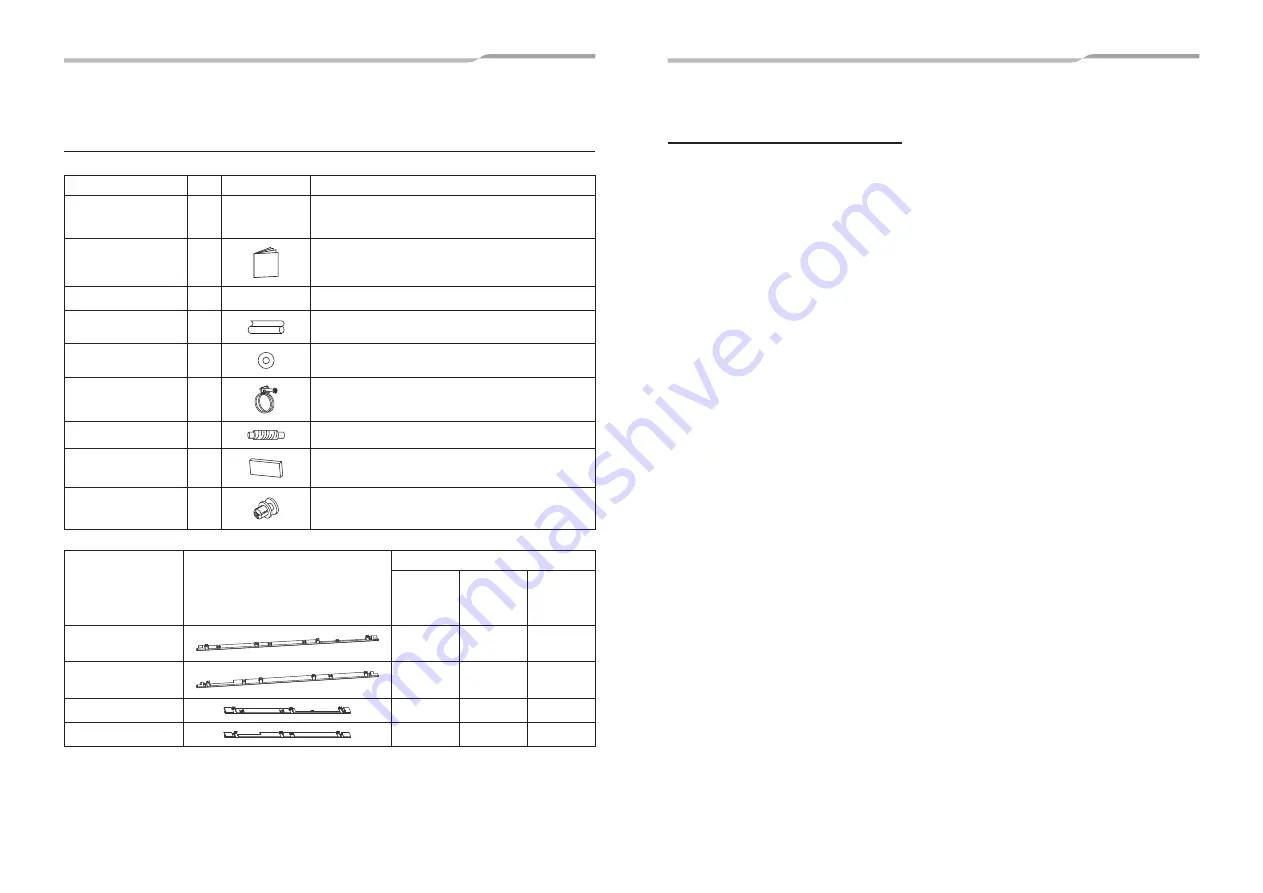
– 7 –
■
Accessory parts
Part name
Q’ty
Shape
Usage
Installation Manual
1
This manual
(Hand over to customers)
(For other languages that do not appear in this Installation
Manual, please refer to the enclosed CD-R.)
Owner’s Manual
1
(Hand over to customers)
(For other languages that do not appear in this Owner's Manual,
please refer to the enclosed CD-R.)
CD-ROM
1
—
Owner’s Manual and Installation Manual
Heat insulating pipe
2
For heat insulation of pipe connecting section
Washer
8
For hanging-down unit
Hose band
1
For connecting drain pipe
Flexible hose
1
For adjusting center of drain pipe
Heat insulator
1
For heat insulation of drain connecting section
Filter stopper
1
For
fi
xing the
fi
lter
Part name
Shape
Q’ty
HM56
HM80
HM90,
HM110,
HM140,
HM160
Filter
fi
xing rail 1 (700 L)
1
2
Filter
fi
xing rail 2 (700 L)
1
2
Filter
fi
xing rail 3 (490 L)
2
Filter
fi
xing rail 4 (490 L)
2
Avoid installing in the following places
Select a location for the indoor unit where the cool or warm air will circulate evenly.
Avoid installation in the following kinds of locations.
y
Saline area (coastal area)
y
Locations with acidic or alkaline atmospheres (such as areas with hot springs, factories where chemicals or
pharmaceuticals are made and places where the exhaust air from combustion appliances will be sucked into the
unit).
Doing so may cause the heat exchanger (its aluminum
fi
ns and copper pipes) and other parts to become
corroded.
y
Locations with atmospheres with mist of cutting oil or other types of machine oil.
Doing so may cause the heat exchanger to become corroded, mists caused by the blockage of the heat
exchanger to be generated, the plastic parts to be damaged, the heat insulators to peel off, and other such
problems to result.
y
Places where iron or other metal dust is present. If iron or other metal dust adheres to or collects on the interior
of the air conditioner, it may spontaneously combust and start a
fi
re.
y
Locations where vapors from food oils are formed (such as kitchens where food oils are used).
Blocked
fi
lters may cause the air conditioner’s performance to deteriorate, condensation to form, the plastic parts
to be damaged, and other such problems to result.
y
Locations near obstructions such as ventilation openings or lighting
fi
xtures where the
fl
ow of the blown air will
be disrupted (a disruption of the air
fl
ow may cause the air conditioner’s performance to deteriorate or the unit to
shut down).
y
Locations where an in-house power generator is used for the power supply.
The power line frequency and voltage may
fl
uctuate, and the air conditioner may not work properly as a result.
y
On truck cranes, ships or other moving conveyances.
y
The air conditioner must not be used for special applications (such as for storing food, plants, precision
instruments or art works).
(The quality of the items stored may be degraded.)
y
Locations where high frequencies are generated (by inverter equipment, in-house power generators, medical
equipment or communication equipment).
(Malfunctioning or control trouble in the air conditioner or noise may adversely affect the equipment’s operation.)
y
Locations where there is anything under the unit installed that would be compromised by wetness.
(If the drain has become blocked or when the humidity is over 80%, condensation from the indoor unit will drip,
possibly causing damage to anything underneath.)
y
In the case of the wireless type of system, rooms with the inverter type of
fl
uorescent lighting or locations
exposed to direct sunlight.
(The signals from the wireless remote controller may not be sensed.)
y
Locations where organic solvents are being used.
y
The air conditioner cannot be used for lique
fi
ed carbonic acid cooling or in chemical plants.
y
Location near doors or windows where the air conditioner may come into contact with high-temperature,
high-humidity outdoor air.
(Condensation may occur as a result.)
y
Locations where special sprays are used frequently.
3
Selection of installation place
2
Accessory parts

